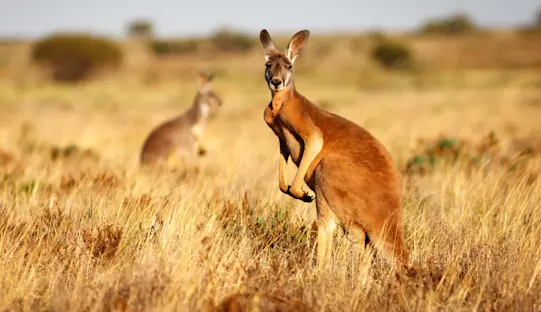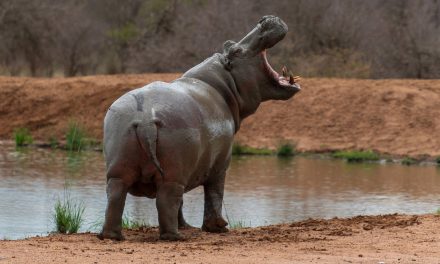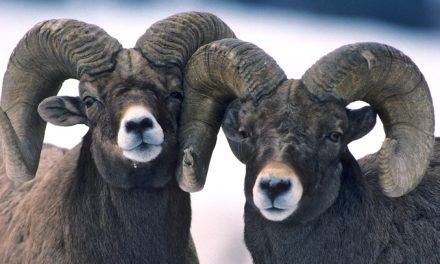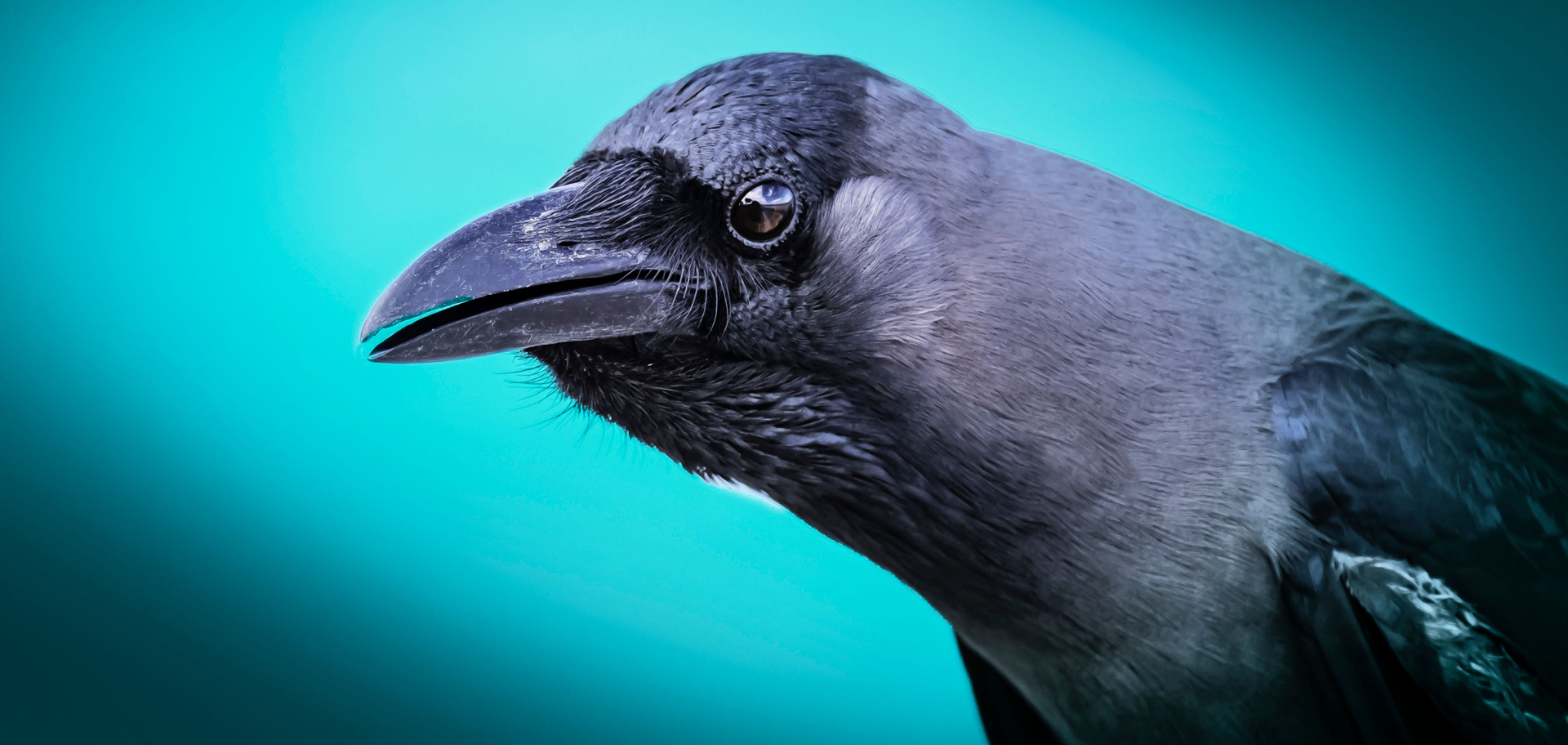
Some birds—such as corvids—have large brains relative to their body sizes and possess a high number of neurons in their forebrains when compared to primates. This density of neurons, rather than just total brain size, is what enables impressive cognitive feats and primate-like intelligence.
The word birdbrain became a common slang term for a stupid person in the early 20th century. And while it’s still sometimes used as an insult, it’s a misnomer. In fact, the brains of birds are so large (relative to their body size) that scientists say they are practically braincases with beaks. These big brains that birds developed led to changes in the shapes and sizes of avian skulls, which, in turn, affected the mechanics of the way birds move and use their beaks to eat and explore their habitats—adaptations that helped them evolve into the extraordinarily diverse, winged creatures we see today.
However, even large brains and awesome, flexible skulls may not save birds from modern-day challenges such as climate change. Some species that breed over large geographic areas can still be adapted to a narrow range of climates, making them more vulnerable to global warming than previously thought. On top of that, species with larger brains tend to be more suited for narrower climate niches, adding to their risks.
Having wings may not help birds much, either. As rising global temperatures alter ecosystems worldwide, animal species usually have two choices: adapt to changing local conditions or flee to a cooler clime. While ecologists have long assumed that the world’s bird species were best equipped to respond to the pressures of climate change simply because they have the option of flying to higher altitudes or towards the planet’s poles, a new study finds that few bird species are able to escape the realities of a warming world.
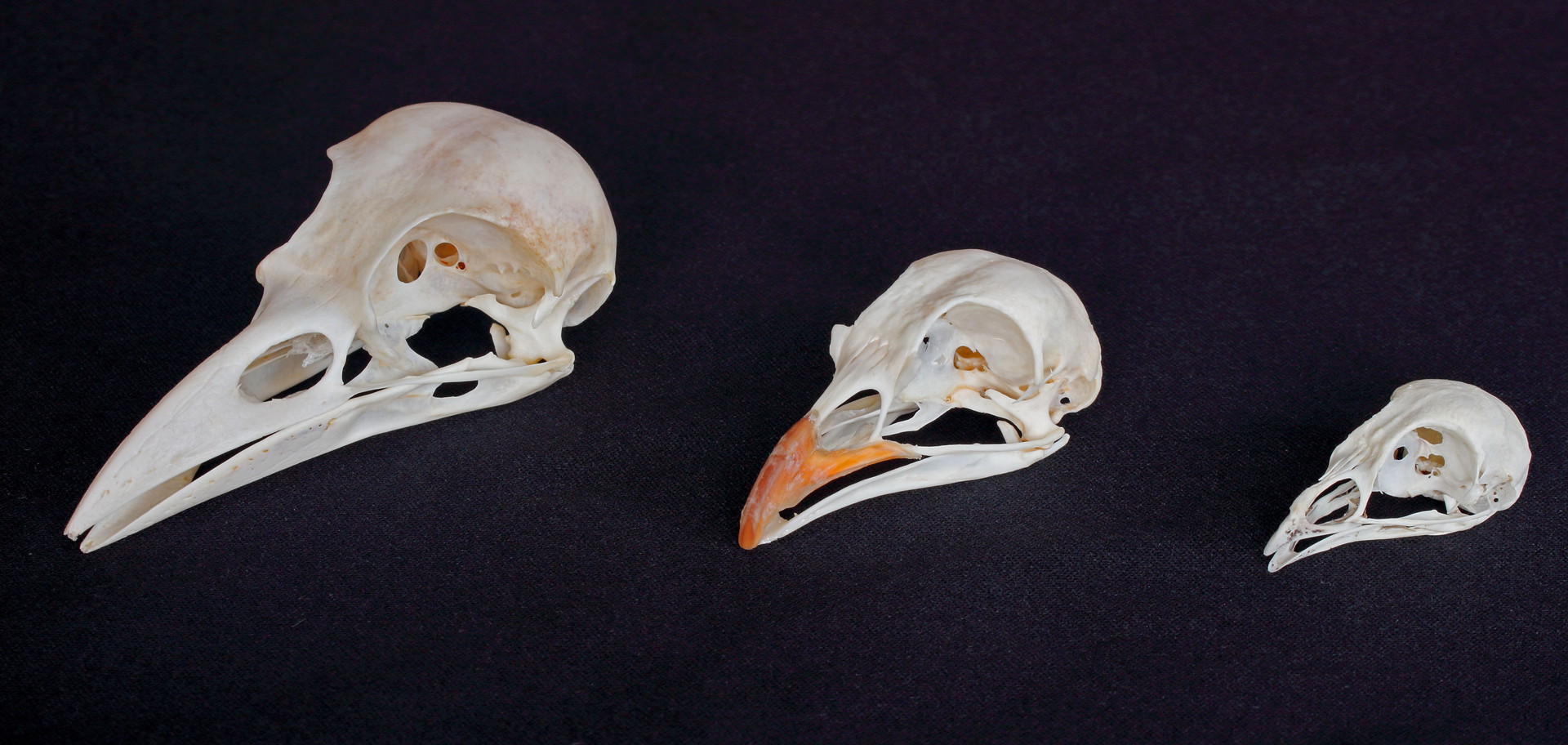
Recently, researchers examined the brain structures of extinct and living birds by making digital “endocasts” from skulls. Endocasts are made by scanning a bird skull and then digitally filling its brain cavities to get the brain’s imprint.
Big brains and a clever way to study them
It’s difficult to know what birds “think” when they fly, but scientists in Australia and Canada are getting some remarkable new insights by looking inside birds’ heads.
Evolutionary biologists at Flinders University in South Australia and neuroscience researchers at the University of Lethbridge in Alberta, Canada, have teamed up to explore a new approach to recreating the brain structure of extinct and living birds by making digital “endocasts” from the area inside a bird skeleton’s empty cranial space. An endocast is created by using computed microtomography to scan a bird skull and then digitally filling its brain cavities to get the brain’s imprint, which is the endocast.
Publishing their study in the journal Biology Letters in January 2025, the researchers reveal that they found that museum skulls of long-dead birds can provide very detailed information on their brains, including the size of the main computation centers for nimbleness and smartness. In the largest such study of its kind, the Flinders University and University of Lethbridge scientists scanned the skulls of 136 bird species for which they also had literature data or microscopic brain sections. This allowed them to determine if the volume of two crucial brain parts, the cerebellum and the forebrain, corresponded with the surface areas of the endocasts. The extremely tight match between the “real” and the “digital” brain volumes surprised the researchers. In fact, they corresponded so closely that there was no need for the actual brain to estimate a bird’s brain proportions. These one-to-one correlations allowed the scientists to gather insights into the neuroanatomy of elusive, rare and even extinct bird species without ever even seeing their brains.
While most of the telencephalon (outer part of the forebrain) was visible in the scans, a substantial portion of the cerebellum was often obscured by this region. Additionally, the avian cerebellum has folds, which are often obstructed by a large blood vessel called the occipital sinus. Given that the degree of obscurity can vary between species, as well, the scientists did not expect the very strong relationship between brain tissue and endocast surface area that they found across all species.
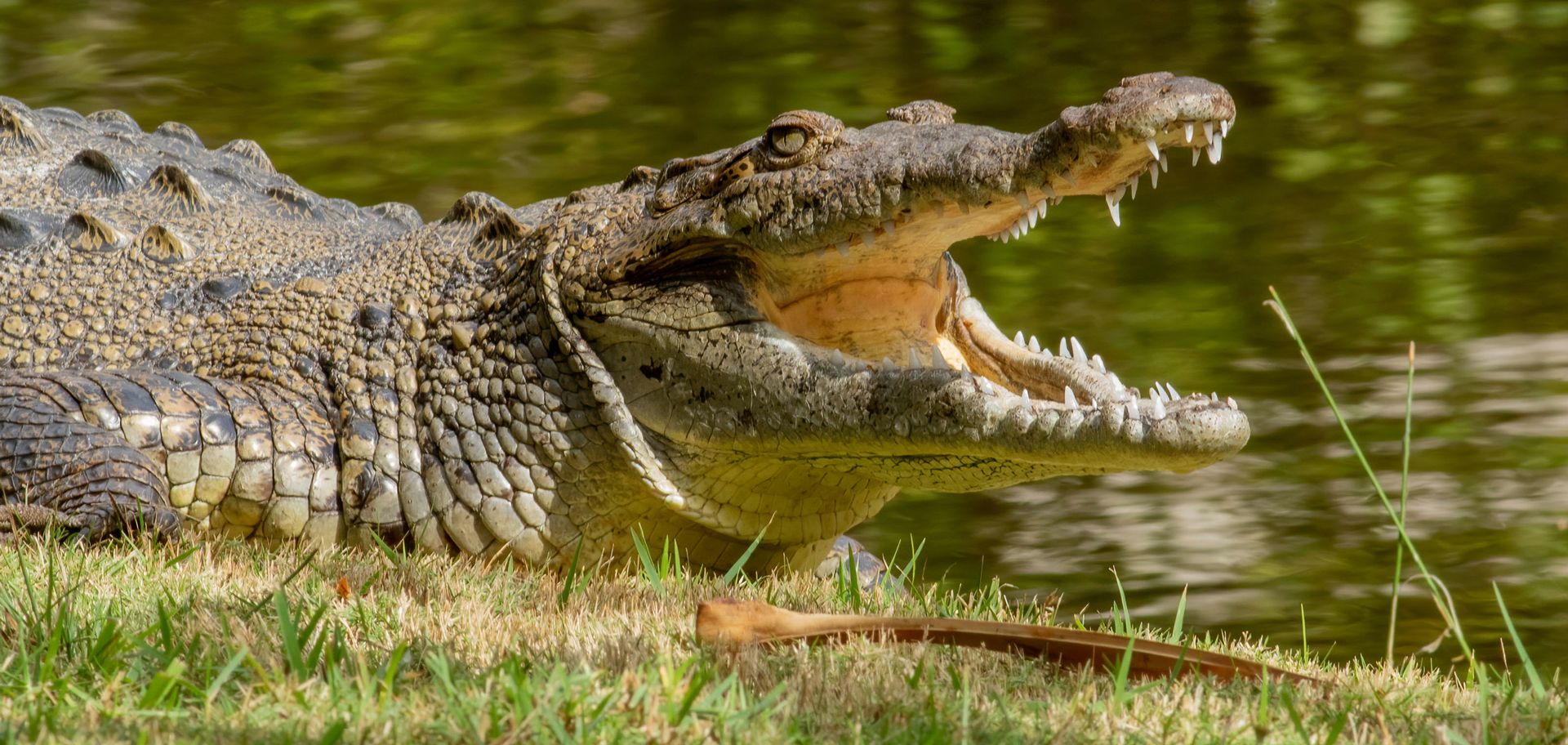
Crocodiles are birds’ closest living relatives. Modern genetic and molecular evidence confirms this relationship, placing them both in the archosaur group, separate from other reptiles like lizards and snakes. Crocodile brains, however, look nothing like those of birds and do not fill their braincases.
Another great thing about digital endocasts, state the researchers, is that they are nondestructive. In the old days, people needed to pour liquid latex into a braincase, wait for it to set and then break the skull to get the endocast. Using nondestructive scanning not only allows endocasts to be created from the rarest of birds, it also produces digital files of the endocasts and skulls that can be shared with the public and other scientists.
This study demonstrates that advanced digital technologies are providing ever-improving access to some of the oldest puzzles in animal diversity. However, the scientific team warns that it remains to be seen how well the data can be applied to dinosaurs, birds’ closest extinct relatives. Unfortunately, crocodiles, the closest living relatives of birds, have brains that look nothing like those of birds—and their brains do not fill their braincases enough to be as informative.
Big brains and flexible skulls led to the evolution of modern birds
Those ancient dinosaur ancestors and birds differ from each other in many important ways. A turning point in birds’ evolution was the development of larger brains, which led to shifts in the shapes and sizes of their skulls.
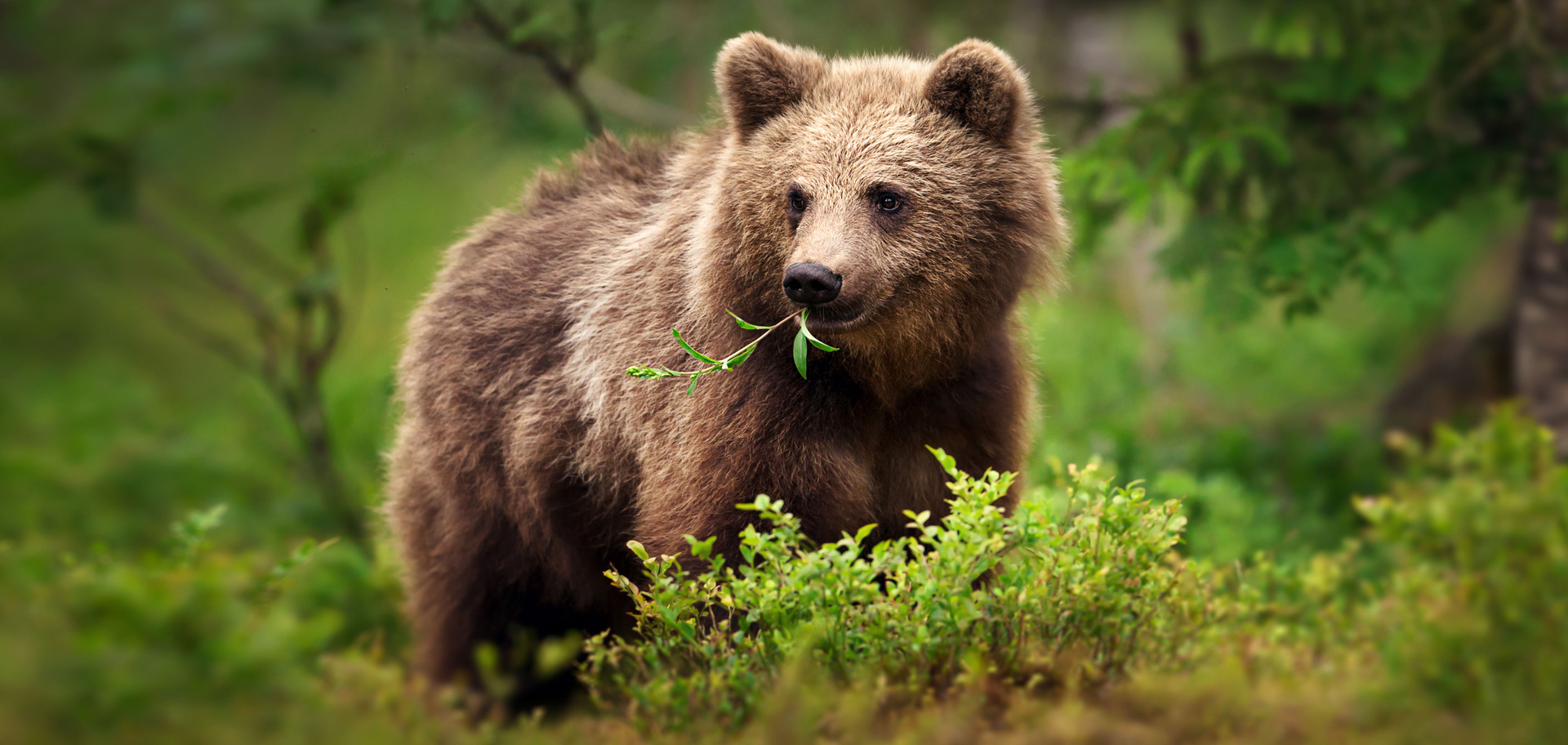
Like other mammals, bears have a complete hard palate, which is the bony roof of the mouth. A hard palate serves to separate the nasal and oral cavities, allowing mammals to breathe and chew at the same time. In contrast, the palates of modern birds are flexible, or “wiggly.”
Recent, new research from scientists at the University of Chicago and the University of Missouri shows how these physical changes affected the mechanics of how birds move and use their beaks, adaptations that helped them evolve into the myriad avian species we see today.
Modern birds, as well as other animals like fish and snakes, have skulls with jaws and palates that aren’t rigid and fixed in place like those in mammals, turtles or non-avian dinosaurs. This kind of flexible—or “wiggly”—skull makes it harder to figure out how the pieces work together.
So, to learn more about how birds’ feeding mechanics, jaw muscles and skulls changed along with the transition from dinosaurs to birds, the University of Chicago and the University of Missouri scientific team began by taking CT scans of a variety of fossils and skeletons from modern-day birds and related reptiles. Using the data from these images, they then built 3D models to calculate the mechanics of the jaws and skulls in action: muscle movements, placements and sizes, and the physics involved in how they all fit together.
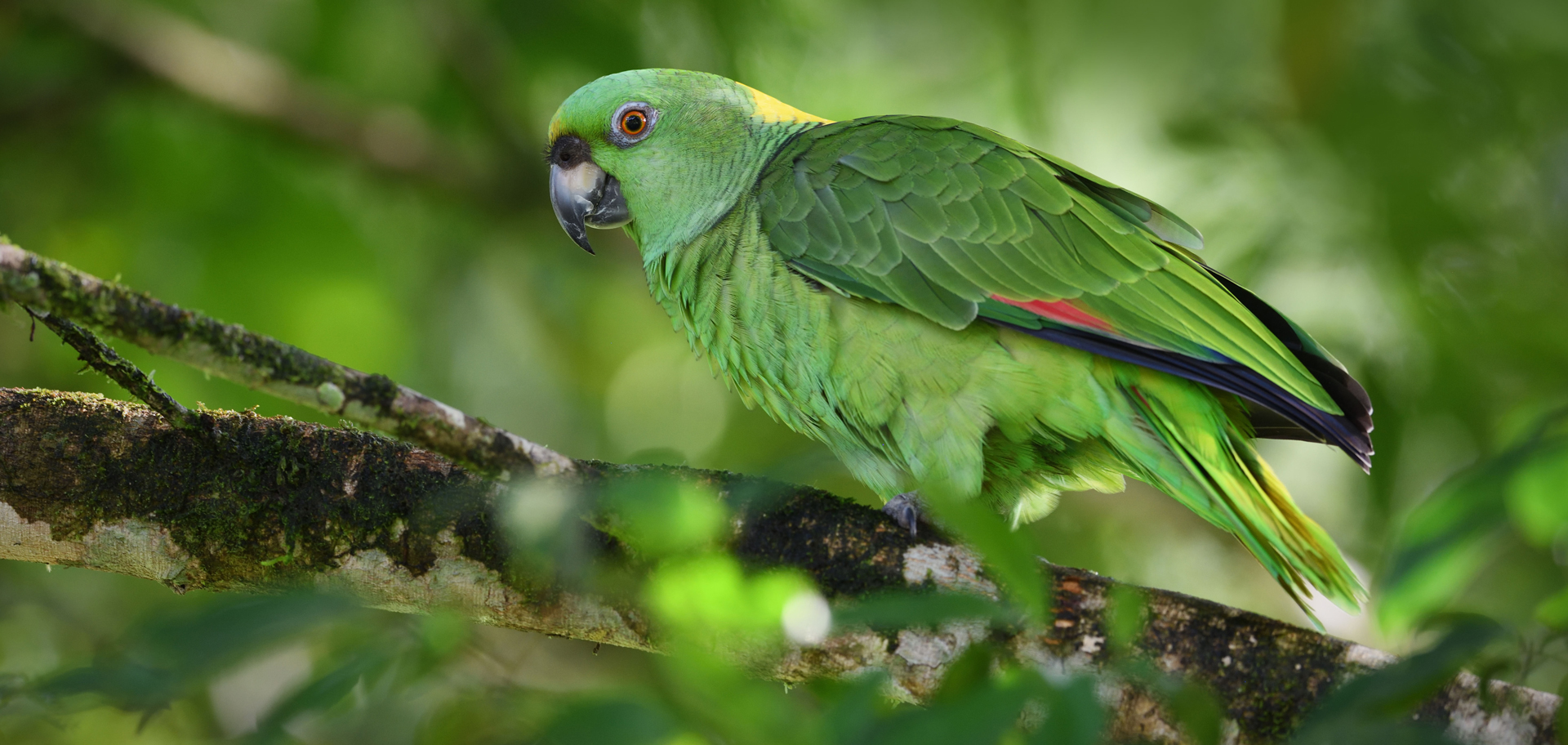
On surfaces that are too thin for their feet alone, parrots use their beaks as a “third limb” to help them climb by anchoring and pulling themselves up vertical surfaces. They exert significant propulsive force with their beaks and necks, comparable to that of primates and human climbers.
One of the key differences between modern birds and other animals is that they have what’s called cranial kinesis, the ability to move different parts of their skulls independently. This gives birds an evolutionary advantage by literally expanding their palates to eat different kinds of foods or use their beaks as multifunctional tools. Parrots, for example, can use their beaks to help climb; other birds use the extra torque to crack nuts and seeds. In some ways, beaks function like surrogate hands, but being able to move the palate around while eating is also critical for helping to acquire food and to survive.
As the data from the 3D models was analyzed, the team saw that as brain and skull sizes increased in non-avian, theropod dinosaurs, muscles shifted into different positions that allowed the palate to separate and become mobile. These changes then increased muscle force, which powers cranial kinesis in most modern-day birds. A large part of it hinged upon when birds evolved relatively large brains. Just like in humans, bigger brains drive a lot of changes in the skull.
As paleontologists discover more details about dinosaurs, the dividing line between them and modern birds becomes murky. Scientists used to think feathers were the key, but now we know that many bona fide dinosaurs had feathers, too. Flight also evolved more than once; and, of course, many well-known, classic pterosaurs could fly, as well.
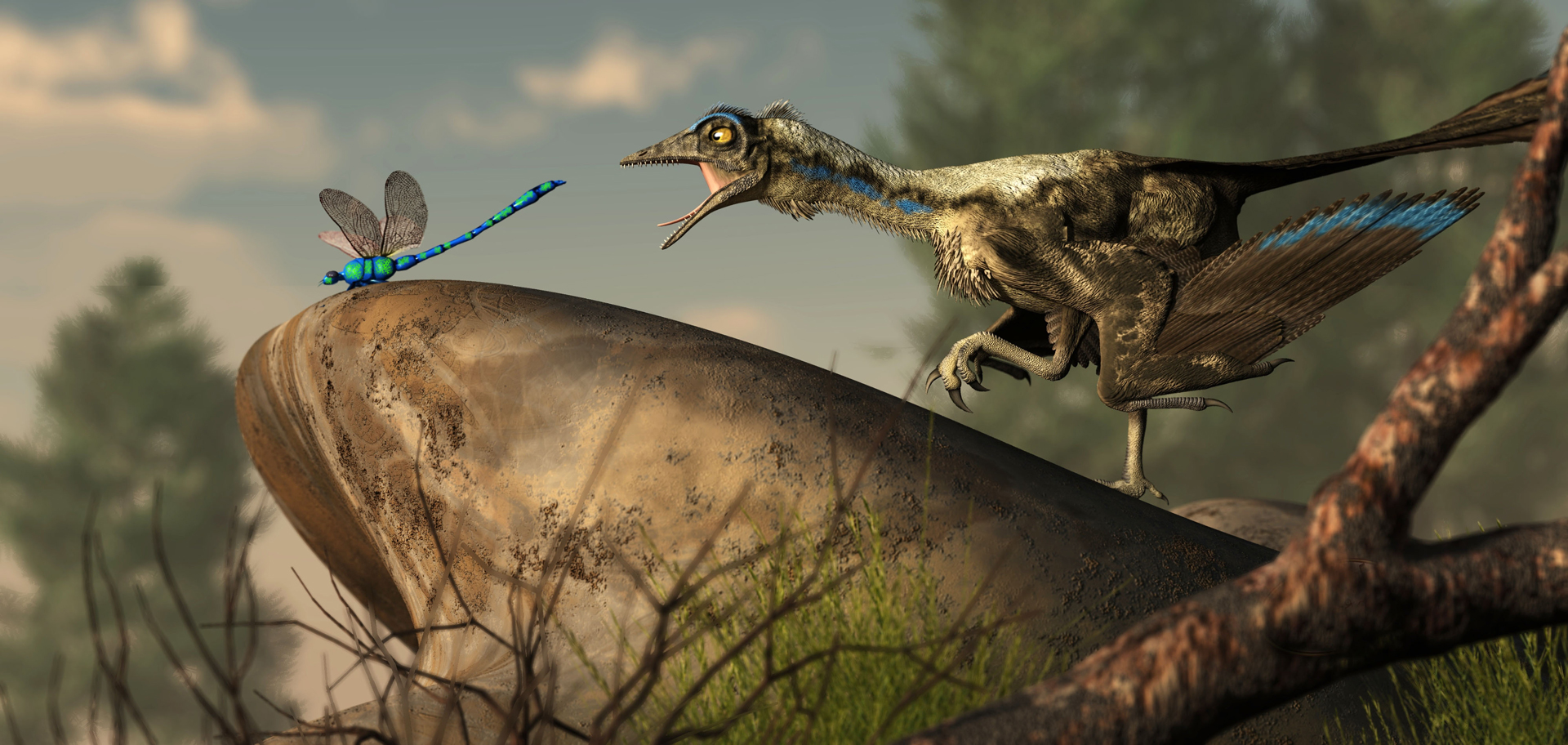
Considered both dinosaurs and birds, members of the genus “Archaeopteryx” possessed a combination of dinosaur-like traits—such as long, bony tails and tiny teeth—and birdlike features, such as feathered wings, which allowed the animals to fly or glide.
However, flexible palates and skulls appeared later than transitional dinosaur-bird creatures like Archaeopteryx, and that may become a key distinction. Cranial kinesis might be one of the clear dividing lines between modern birds and their more dinosaur-like, bird ancestors.
Big brains and big ranges might not save birds from climate change
Biologists have long debated why some animals and plants can adjust to a wide range of climates, while others can’t. Understanding why could help conservation managers and decision-makers identify which species are most vulnerable to climate change.
To aid that effort, researchers at the University of Texas at Austin evaluated global distribution maps and other data for about 1,500 bird species and found some surprising patterns. For example, some species that breed over large geographic areas might still be only able to thrive in a limited range of climates, making them more vulnerable to climate change. Just look at the Arctic, which occupies a considerable portion of Earth’s landmass but exhibits very similar climate patterns all over. Because the region is so big, species that occupy it tend to have large populations and large geographic ranges, two characteristics that are often associated with lower extinction risks. But because many of those species are adapted to a restricted range of climates, those seemingly large populations can be quite susceptible to collapse when climate patterns begin to change.
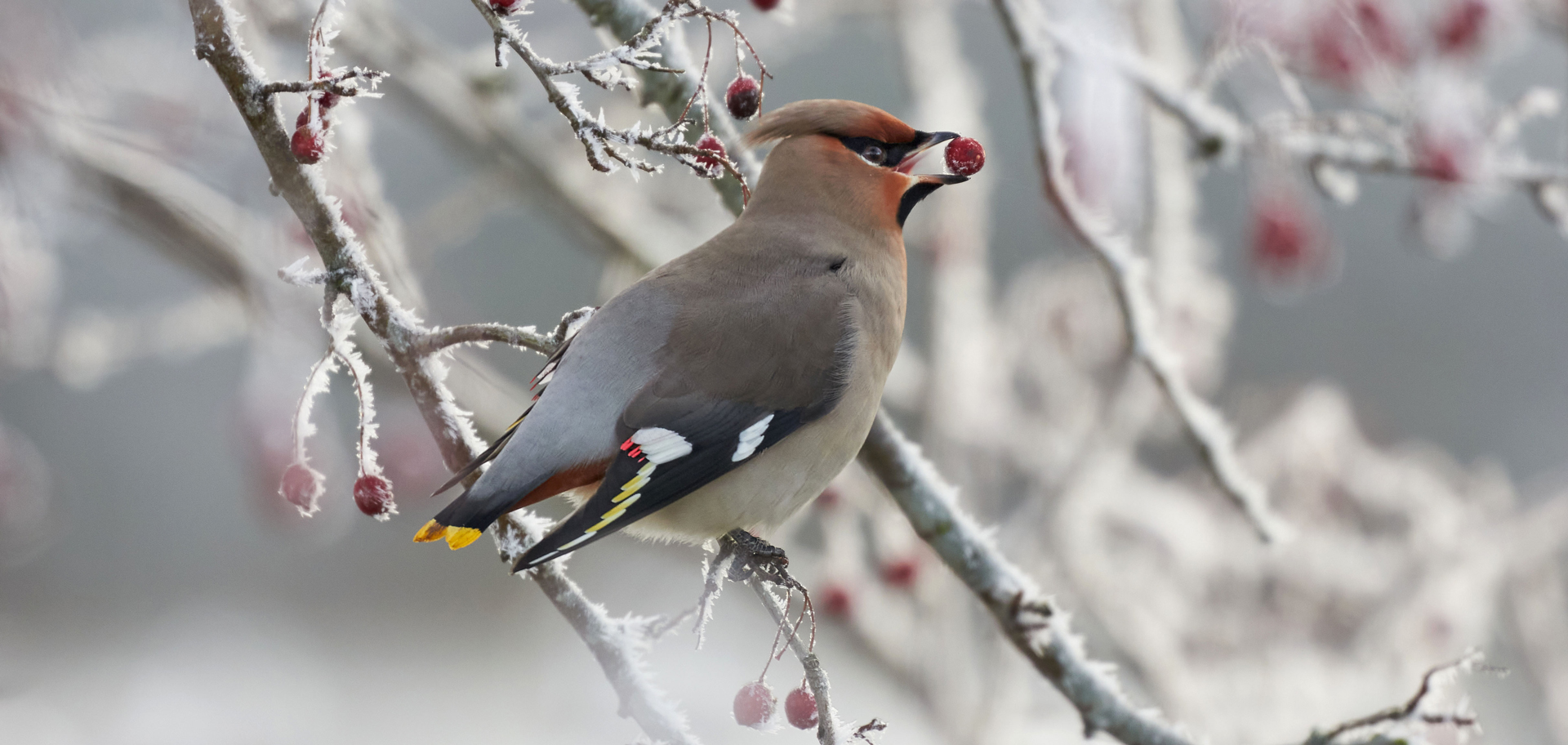
True to their name, Bohemian waxwings wander across the northern United States and Canada. While their breeding range extends over a large swath of the Arctic, the birds live in a much smaller and more extreme range of climate conditions than other birds, making them at greater risk from climate change.
The Bohemian waxwing, a bird well-known to European and North American birders, is a case in point. The bird’s breeding range extends over a large swath of the Arctic, while the chestnut-crowned laughingthrush inhabits a much smaller arc in Asia centered on Bhutan and Nepal. Because the Bohemian waxwing experiences a very narrow range of climate conditions, the bird may be at greater risk from climate change than the laughing thrush.
Larger brain sizes tend to correlate with more flexible behavior, too, so big-brained birds are usually expected to be more adaptable. However, the researchers additionally found that species with larger brains tend to be adapted to constricted climate niches, which suggests they could also be more vulnerable to climate change than once believed. A climate niche is the range of different climate conditions (precipitation, temperature and how predictably these two vary over time) that a species can thrive in.
For this study, the researchers used avian range maps estimated from hundreds of thousands of direct observations by citizen scientists reported through eBird. This successful partnership between bird-watchers and scientists is providing highly accurate information of where different species occur in space and is enabling scientists to answer questions that were simply impossible to address before.
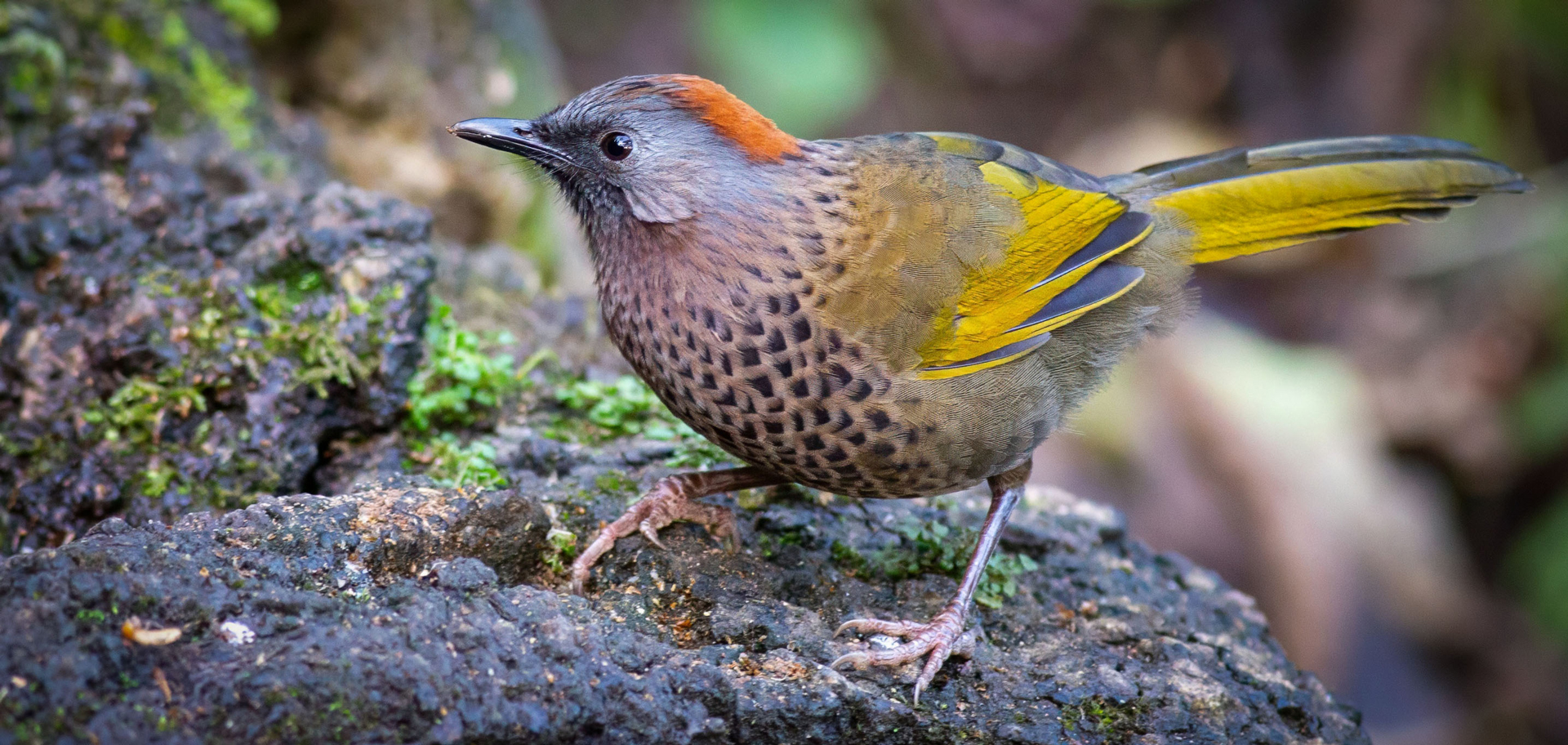
The chestnut-crowned laughingthrush inhabits a small arc in Asia centered on Bhutan and Nepal. It is one of the most charming songbirds of the Himalayan undergrowth. Luckily, it is listed as of “least concern” on the International Union for Conservation of Nature’s Red List of Threatened Species.
The research team also created a system for describing all the climate types found on Earth in terms of two factors: temperature harshness, a value that increases with colder, more variable and less predictable temperatures; and xeric harshness, which increases with lower, more variable and less predictable precipitation. Then they created a 2D, “climate space” map that shows how much of Earth’s land surface corresponds to each possible combination of these two factors. Places that are less harsh in temperature and precipitation are near the center, while places that are harsher in one or both factors are farther out.
Finally, for each species, they matched the range of climates that the birds tend to occupy with the climate space map to see where and how large their climate niche is. Birds with a smaller and more extreme climate niche tend to be at higher risk from climate change.
The scientists say this study, the results of which were published in the journal Nature Communications in April 2025, highlights why the usual way of assessing risk for a species—which typically involves a checklist of individual factors—misses the complexity of contradictions and underlying patterns. We need to stop looking at individual risk factors in isolation, conclude the researchers, and evaluate how these complex factors combine. Sometimes, it is the unexpected interactions that matter most.
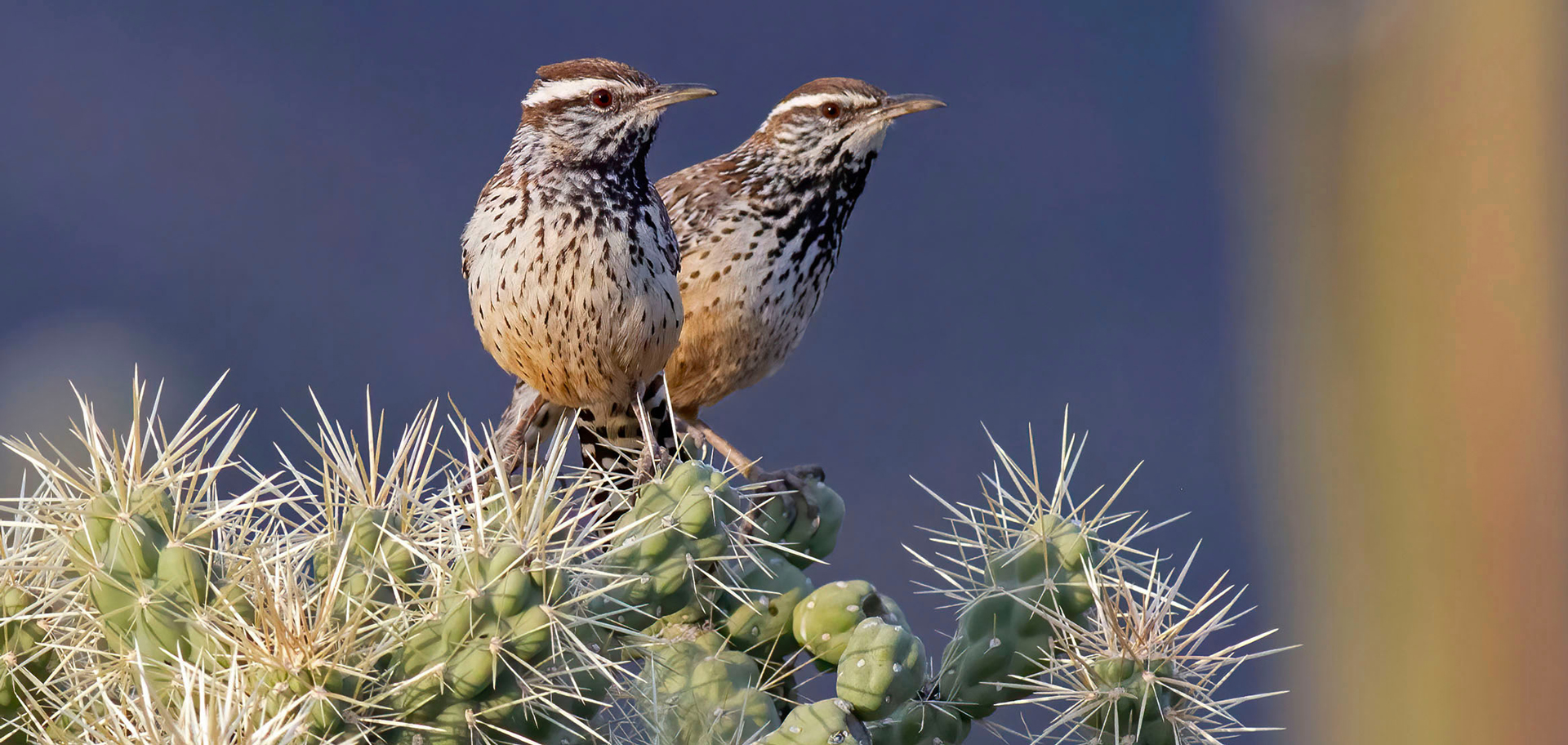
Cactus wrens are nonmigratory birds that feed on fruits, insects and seeds. By getting most of their water from food, they are well adapted to desert life. But because they don’t migrate, they may be more susceptible to climate-triggered changes in their environmental niche.
Big brains and the search for cooler climes
As rising global temperatures alter ecosystems worldwide, animal species usually have two choices: adapt to changing local conditions or flee to a cooler clime. Ecologists have long assumed that the world’s bird species would fly to higher altitudes or towards global poles. But a new study, the results of which were published in the journal Nature Ecology and Evolution in May 2025, finds that few bird species are able to escape the realities of a warming world.
For the study, researchers from Yale University analyzed data on the movements of 406 species of North American birds collected from citizen observers over two decades, as well as corresponding local temperature changes. They found that many of the assumptions they’d made about how bird species are responding to climate change were correct. During summer, for instance, bird species on average relocated between 40 and 50 miles northward during the period covered in the data—and sometimes relocated to higher elevations. And, on average, the northbound movement helped birds avoid a temperature increase of about 2.16 degrees Fahrenheit, or about half of the temperature increase they would have experienced if they stayed put.
But, on average, birds still experienced a 2.43-degree Fahrenheit increase in temperature during the summer months, compared with temperatures in their original home range. During winter months, birds had only minimal success in limiting their exposure to warming, experiencing only 11% less warming than had they not moved. In winter, birds experienced on average a whopping 6.66-degree Fahrenheit increase in temperatures over the 20 years, reducing their potential exposure by only half a degree via their movement north.
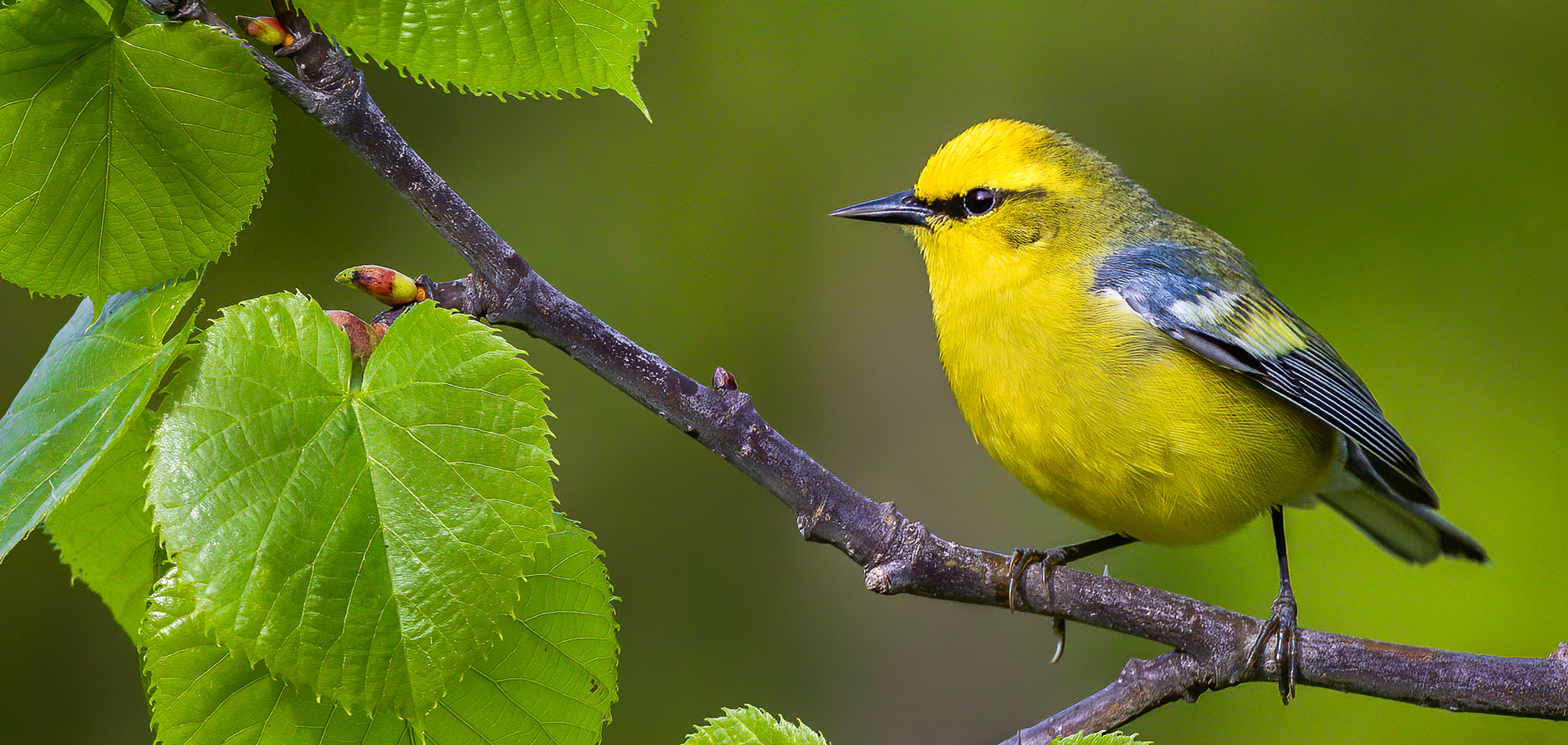
Global warming threatens blue-winged warblers with a phenological mismatch, where the earlier arrival of spring disrupts their long-distance migration, leading to a lack of food and ideal nesting sites. While the birds have shifted their summer ranges northward, it may not be enough to keep up with the rapid pace of climate change.
Birds’ ability to escape higher temperatures also varied by species. Overall, more than 75% of birds managed to reach slightly cooler climes in response to warming temperatures. But some species, like the cactus wren, which is native to arid systems and deserts in North America, did not move at all, making the birds more susceptible to climate-triggered changes to their environmental niches. Such birds could be limited in flight capability, prevented from leaving their current home environment or competing in new locations by specific, fine-scale ecological dependencies and habitat needs.
Bird species capable of flying long distances were the most successful in limiting their exposure to warmer climates and retaining their historic climatic niches, the researchers found. This included the blue-winged warbler, which traveled more than 100 miles northward and experienced two fewer degrees of warming than if it had stayed put. But even these birds are dealing with temperatures that exceed those they’d known in their original home range 20 years ago.
Climate change is expanding the gap between the climatic niches that species have evolved into over thousands of years and what they experience in their home grounds, the authors say. In a uniquely well-studied continental system, even a highly mobile group, such as birds, is unable to relocate quickly enough to keep up with the velocity of current climate change. This raises deep concerns about the ability of all the other, less mobile species, such as mammals and reptiles, and the lesser-known species to persist in a warmer world. A much better understanding and management of the most likely climate change victims—those most ecologically and geographically tied down—is needed to fend off an impending extinction crisis.
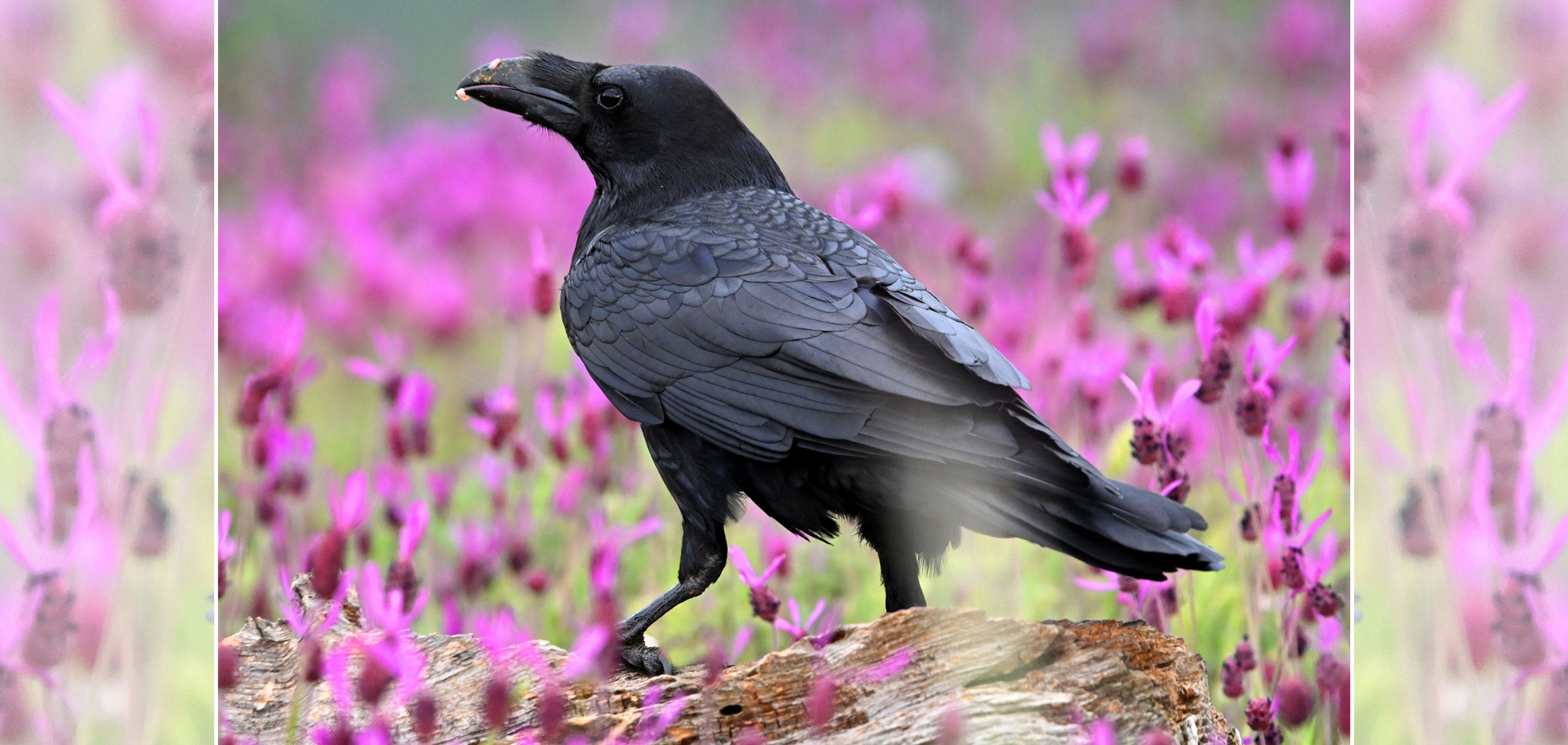
Crows, ravens and other corvids exhibit remarkable intelligence—including long memories, problem-solving, tool use and even social awareness—challenging long-held assumptions that such cognitive abilities are exclusive to humans and primates.
Big brains and even larger understandings
The insult birdbrain stems from the idea that birds have small, primitive brains and are incapable of complex thought, a notion now proven false. Birds not only have very sizable brains, they’re also highly intelligent. Their cognitive abilities include communication, complex problem-solving, memory, navigation and tool use.
Birds also demonstrate high social intelligence. Some birds even understand the mental states of others, a foundation of empathy—a quality that is sometimes lacking in us.
So, I would suggest that from now on, when you hear someone calling another a “birdbrain,” consider it a compliment.
Here’s to finding your true places and natural habitats,
Candy











